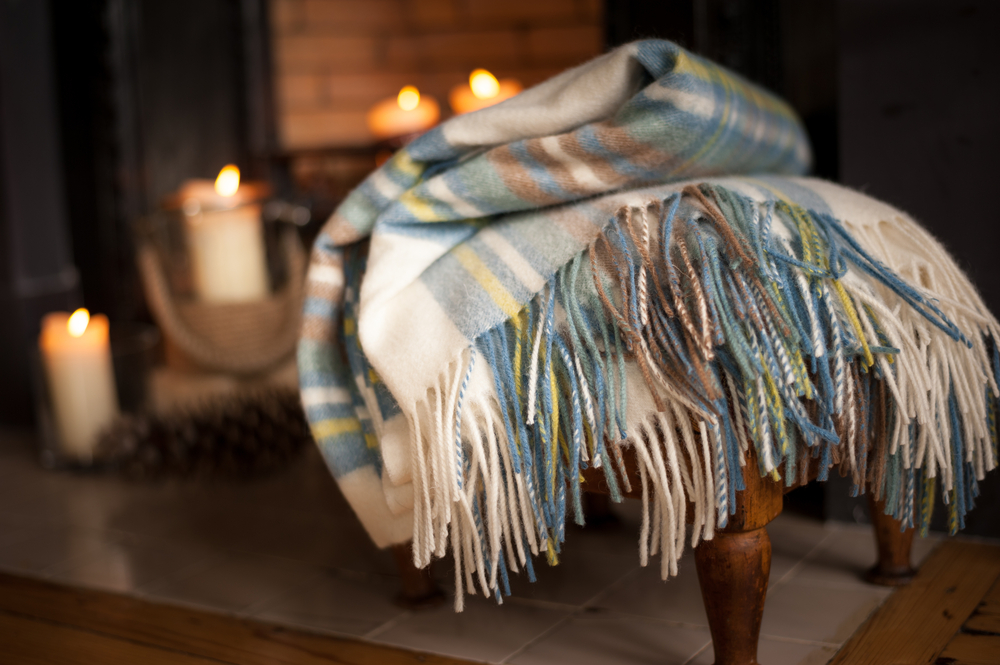The Best Way to Wash Wool Clothing and Blankets
A quality wool blanket will give a lifetime of comfort and warmth, so it’s worth taking care of your investment to keep it looking in pristine condition for longer. Inevitably, wool blankets and clothing need to be washed so here’s our useful guide on the best way to wash your woolen.
Wool is a special fiber that is naturally breathable and repels dirt and odors. These characteristics mean that wool blankets and clothing do not need to be washed as often as other materials. The less you wash your wool, the longer it will last, so before you set about washing it, consider whether hanging it outside on a dry day to blow in the breeze (or simply giving it a shake) will suffice. In many cases, this alone will dislodge any dirt and freshen up your blanket so you can get back to enjoying it sooner.

Check the Label
If washing it is the only way forward, your first action should always be to check the label and understand the difference between wools. Some woolens are dry clean only, while others can be hand or machine washed with care. However you wash your wool, it’s essential to remember that a combination of heat, water, and friction is likely to cause your blanket to shrink and compact, so cool and gentle is definitely the way to go.
Dry clean-only blankets will have an empty circle or circle containing a P, A, or F on the label. These are best left to the professionals to clean, so please take your beloved blanket to the dry cleaners, rather than risk causing any damage by attempting to clean it yourself.
Spot Cleaning
If your blanket just has a stain on one particular area, spot cleaning may be the quickest, easiest and safest option. Use a sink or bowl to soak just the affected area in mild detergent and lukewarm water. Take care not to scrub or rub the fabric, like you might with cotton, but blot with a soft cloth instead and rinse.

Machine Washing
Many modern washing machines have a special wool, cycle with cooler water and gentler movements designed to minimize the risk to your precious blankets and garments. If you decide to machine wash your wool, always make sure you select the correct cycle and use a dedicated wool detergent instead of your usual laundry routine. Any stains should be spot treated by soaking in wool detergent for 10 minutes before you start the machine cycle.
Handwashing
Handwashing is relatively easy when it comes to wool because rubbing and elbow grease should be avoided at all costs. Depending on the size of your blanket or garment, a bowl, sink or even a bathtub can be used to handwash it. Fill your container with lukewarm water, add wool detergent and swirl the water well to mix it thoroughly. Place your wool into the water and gently move it around to get rid of any air bubbles and ensure it is fully submerged. The next bit is easy – simply leave it to soak for 10-30 minutes, before draining the water and carefully rinsing twice.
Drying
Whether you handwash, machine washed, or spot cleaned your blanket, it needs to be dried with equal care to maintain its shape. Do not wring the wool out and never, ever put it in the tumble dryer, which is likely to damage both the texture and size. The best way to dry a wool blanket is by draping it outside over a washing line as soon as the washing stage has finished and allowing it to drip dry. Ensure the weight is supported (not pegged at the corners and sagging in the middle) to avoid stretching and out of direct sunlight to prevent color fading or coarseness from drying too fast. If you need to speed up drying your blanket, try lying it flat on clean, dry towels and gently rolling them up together to extract some of the excess water, before hanging it out or lying flat to dry.
And Finally
Even with the most careful washing, you may find little bobbles on your wool from time to time. This is often the result of friction from movement in normal, everyday use. These bobbles are known as pilling, little balls of loose wool fibers which can easily be removed with a de-pilling comb. Simply slide the comb over the affected area to remove and leave it

